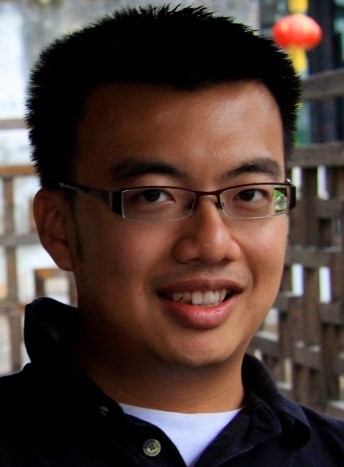- To understand and visualize the hazards that can result in loss of containment through simulation using computational fluid dynamics
- To gain a deeper understanding of what CFD can help to achieve in loss prevention engineering
- To understand the applications of CFD in loss prevention, engineering design and process safety management
This course aims to introduce computational fluid dynamics to industry professionals and applying it in loss prevention, hazard identification, risk assessment, design and engineering, fire and gas detection. It helps participants to understand fundamental concept about occurrence mechanism of process related fire and explosion through observation on CFD simulation. It is helpful in evaluating the effectiveness of engineering control, prevention and mitigation measures as CFD can demonstrate the interaction of fluid flow with 3D geometry structure. With visually striking animation showing the development of fire and dispersion, CFD can provide useful guide on emergency response actions in reacting to various types of scenarios. Through this course, participants will gain fundamental understanding, develop analytical skill, and demonstrate the effectiveness of risk mitigation measures to achieve loss prevention.
Lee
Cho Hing
currently is Gexcon’s General Manager Malaysia cum Business Development APAC.
Lee has about 26 years of working experience in consultancy related to risk
management, HSE and sustainability. Lee started his career as a Risk and Loss
Prevention Engineer in a Global Fortune 500 enterprise. Over years he works
closely with government authorities, energy companies, and industrial clients
to deliver effective and forward-thinking risk solutions. His emphasis on
applying advanced Loss Prevention concepts to engineering and operational
challenges has led to improved safety performance and smarter design across
complex projects. From 2009 to 2012, he served as an internal consultant for
Singapore’s governmental agencies on PSM matters with respect to Jurong Island
version 2.0 development plan. Recently, from 2023 to 2025, Lee has been
contributing to the development of national hydrogen technical standards as an
expert committee member of the Singapore Standards Council.
Richard Lee is currently the Business Development Lead of Gexcon based in Singapore. Prior to joining Gexcon in April 2023, he has worked over 16 years in DNV as a Quantitative Risk Assessment (QRA) consultant and as a technical support for consequence and risk modelling software PHAST and SAFETI. He has accumulated years of experience and expertise in technical safety and modelling software. Throughout his career he had delivered many safety studies such as QRA, Fire and Explosion Risk Analysis, Ship Collision Study, Dropped Object Study and etc for both onshore (e.g. refinery, tank farm and petrochemical plant) and offshore facilities (e.g. FPSO, jack-up rig, wellhead platform and etc). While working as the software technical support, he was also the trainer delivering QRA and software training. To date, he had delivered over 60 trainings, 15 webinars and conferences.
QRA practitioners, EIA consultants, project engineers, project managers, inspectors, legislators, designers; engineers working with decarbonization, energy transition, and carbon capture and storage projects; HSE engineers working in the petrol and petrochemical, refining, chemical and oleochemical plant; professionals dealing with risk and safety in industry; fire safety engineers, fire safety managers, fire insurers and underwriters.
- Accorded 6 SDU points by MOM-WSH CPD Board
- Qualified for 6 PDU points by PEB
- FSM-CPD points -pending approval
- E-Certificate of Attendance will be issued to all attendees upon completion
21 October 2025
Time | Programme |
0830
- 0900 | Registration |
0900
- 1100 | ·Introduction to CFD ·Application of CFD in Loss Prevention ·2D and 3D consequence modelling: understanding the differences |
1100
- 1115 | Tea
Break |
1115
- 1230 | ·Integral model and CFD model ·Application of integral and CFD models |
1230
- 1330 | Lunch |
1330
- 1515 | ·Decarbonization and Loss Prevention ·Case Study – Hydrogen Refueling Station(FLACS simulation to be run by the participants) |
1515
– 1530 | Tea
Break |
1530
- 1700 | ·Facility siting and layout optimization |
1710 | End
of Program |

- Speaker
Lee Cho Hing currently is Gexcon’s General Manager Malaysia cum Business Development APAC. Lee has about 26 years of working experience in consultancy related to risk management, HSE and sustainability. Lee started his career as a Risk and Loss Prevention Engineer in a Global Fortune 500 enterprise. Over years he works closely with government authorities, energy companies, and industrial clients to deliver effective and forward-thinking risk solutions. His emphasis on applying advanced Loss Prevention concepts to engineering and operational challenges has led to improved safety performance and smarter design across complex projects. From 2009 to 2012, he served as an internal consultant for Singapore’s governmental agencies on PSM matters with respect to Jurong Island version 2.0 development plan. Recently, from 2023 to 2025, Lee has been contributing to the development of national hydrogen technical standards as an expert committee member of the Singapore Standards Council.

- Speaker
Richard Lee is
currently the Business Development Lead of Gexcon based in Singapore. Prior to
joining Gexcon in April 2023, he has worked over 16 years in DNV as a
Quantitative Risk Assessment (QRA) consultant and as a technical support for
consequence and risk modelling software PHAST and SAFETI. He has accumulated
years of experience and expertise in technical safety and modelling software.
Throughout his career he had delivered many safety studies such as QRA, Fire
and Explosion Risk Analysis, Ship Collision Study, Dropped Object Study and etc
for both onshore (e.g. refinery, tank farm and petrochemical plant) and
offshore facilities (e.g. FPSO, jack-up rig, wellhead platform and etc). While
working as the software technical support, he was also the trainer delivering
QRA and software training. To date, he had delivered over 60 trainings, 15
webinars and conferences.
Member: $270
Write a public review